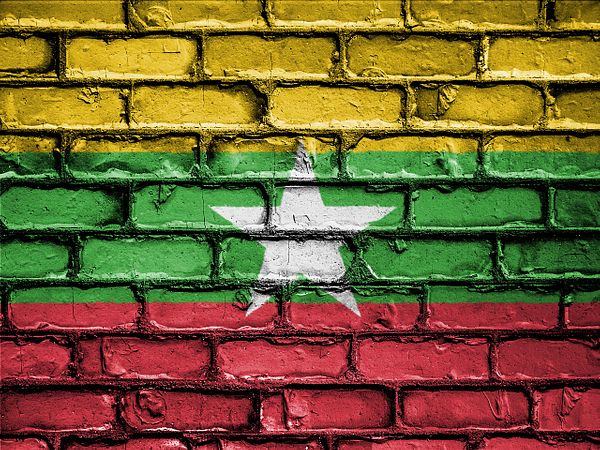
A civilian militia group in Myanmar claims that it killed around 50 soldiers and injured a number more in a series of landmine attacks in Magwe Region last week, the latest sign of rising resistance to the military junta that seized power in February.
According to a report in The Irrawaddy, which cited a representative from the People’s Defense Force (PDF) in Gangaw township, the casualties stemmed from two incidents. The first took place on August 19, when a vehicle carrying junta soldiers, one of a convoy of six, triggered a landmine planted by the civilian resistance on the Gangaw-Kale Highway. At least 20 soldiers were killed in the explosion and many others were injured, according to The Irrawaddy.
The publication reported that another 30 junta troops were killed and two military vehicles damaged in a similar landmine attack on a troop convoy the day before.
The Irrawaddy was not able to independently verify the casualty figures offered by the PDF – and the anti-coup resistance has every incentive to err on the side of overestimating the number of casualties claimed by militia attacks – but the report hints at a significant uptick in armed resistance to the military junta.
If the first few months after the military’s seizure of power on February 1 saw waves of mass demonstrations, the past few months have seen rising instances of armed rebellion. In early May, the shadow National Unity Government (NUG) announced the formation of a People’s Defense Force (PDF), to combat the military and form the kernel of a future Federal Army. Since then, civilian militia groups (some of which were formed before the PDF’s establishment) have sprang up in all parts of the country, many taking the name of the PDF and pledging allegiance to the NUG, though in practice often operating independently from it.
The result has been increasing numbers of killings and bombings against junta targets and personnel. On August 9, the NUG announced that at least 1,130 Myanmar soldiers had been killed and 443 wounded in more than 700 clashes between junta forces and local militias across the country in June and July. In July alone, junta forces faced 60 battles with ethnic armed forces and 62 shootouts with civilian PDFs.
While these figures also have to be taken with a grain of salt, at the very least they demonstrate that defending their February 1 coup is imposing increasing strains on the Myanmar military. Last week, among other attacks, four policemen were shot dead by unknown attackers on a train on Yangon’s Circular Railway. In upper Myanmar, the regime admitted that aircraft at an airbase in Magwe Region were damaged in attacks that were claimed by the local franchise of the PDF.
But as I’ve suggested before, there is no sign that the military is going to yield to such pressure. It has already painted the NUG, the associated Committee Representing Pyidaungsu Hluttaw, and anti-junta militias as “terrorist” organizations, and has shown no compunction in treating them as such. Another report in The Irrawaddy on Saturday claimed that junta has issued an order to its unit commanders and other senior officers to be combat ready, suggesting that it is about to intensify its attacks on anti-regime militias.
While the collapse of the military or mass defections to the NUG and anti-coup resistance remain long way off, the country is far from the stable orderly situation that the junta has tried to project. The most likely result is a continuing stalemate that exacts an increasing cost on the bulk of the Myanmar population.

0 Comments